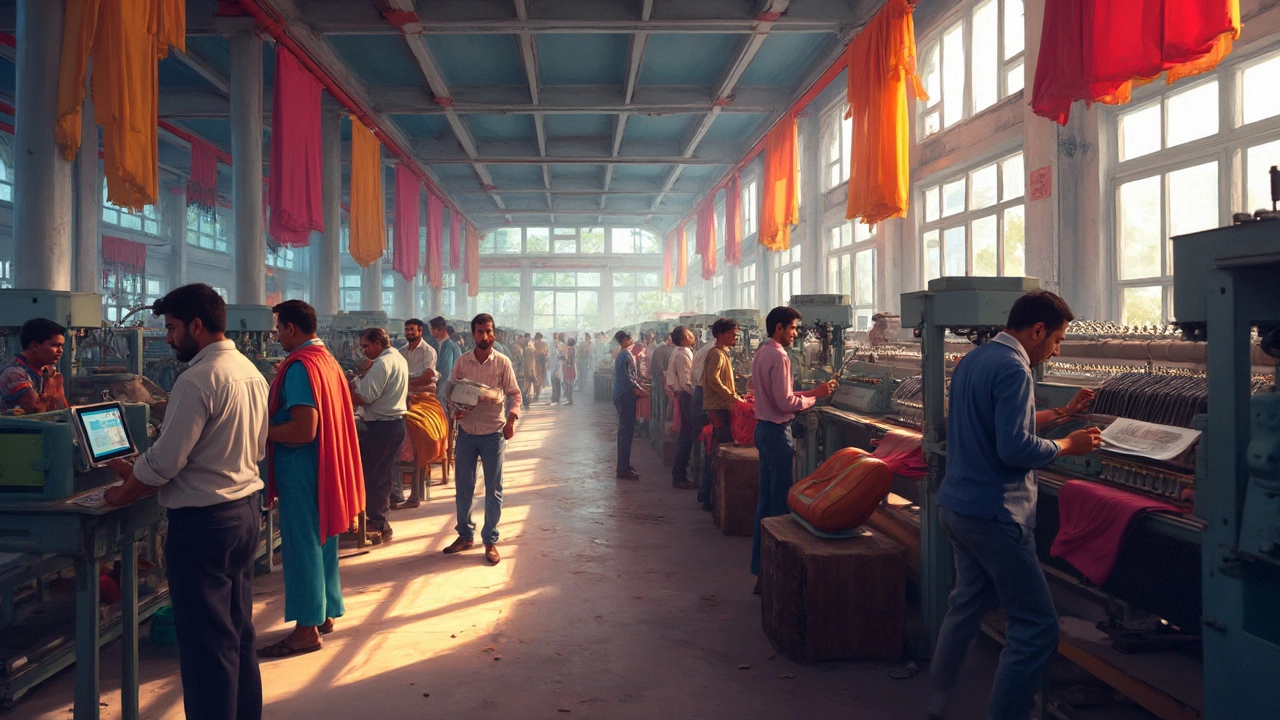Textile Policy Benefits: How India’s New Rules Boost Manufacturers
If you run a textile unit or plan to start one, the latest Indian textile policy is worth your attention. It packs a set of incentives that can lower your expenses, improve product quality, and open new markets. Below, we break down the most useful parts of the policy and show how they can affect your daily operations.
Key incentives for manufacturers
First up, capital subsidies. The government offers up to 30% cash back on investments in modern looms, dyeing machines, and automation tools. This means you spend less out‑of‑pocket for equipment that can boost productivity.
Second, tax relief. For the next five years, eligible firms get a reduction in GST on raw material purchases and a lower corporate tax rate on profits generated from textile sales. The more you produce, the bigger the tax cut.
Third, export encouragement. The policy creates a special export incentive scheme (SEIS) that pays a supplemental duty rebate on every dollar you earn from overseas markets. It also simplifies customs paperwork, so you ship faster.
Fourth, talent development. Companies that invest in training programs for skilled weavers and technicians can claim a reimbursement of up to 20% of training costs. Skilled workers lead to higher quality fabrics and fewer defects.
What this means for your business
Lower capital costs let you upgrade your plant without draining cash reserves. That translates to faster order turnaround and the ability to take bigger contracts.
Tax breaks improve your bottom line, giving you room to reinvest in R&D or expand into new product lines like technical textiles or eco‑friendly fabrics.
Export incentives make overseas sales more profitable, encouraging you to explore markets in Europe, the U.S., and Southeast Asia. With easier customs clearance, you can ship more frequently and keep inventory lean.
Training reimbursements help you build a skilled workforce, reducing turnover and improving product consistency. A stable team also means you can maintain tighter quality control.
In practice, many midsize manufacturers have reported a 15‑20% jump in profit margins after taking advantage of these schemes. Smaller players see quicker ROI on new machinery because the subsidy cuts the pay‑back period.
To start, check if your unit qualifies for the capital subsidy. You’ll need a detailed project proposal, cost estimates, and proof of registration with the Ministry of Textiles. The application process is online and takes about three weeks.
Next, align your accounting with the tax relief rules. Keep all purchase invoices for raw materials and maintain a clear ledger of textile‑related revenue. This makes the GST and corporate tax claims straightforward during audits.
Finally, explore the export incentive portal. Register your company, upload shipping documents, and the system will calculate the rebate automatically. It’s a good idea to work with a freight forwarder who understands the new customs forms.
Bottom line: the textile policy is designed to make Indian manufacturers more competitive globally. By tapping into subsidies, tax cuts, export support, and training reimbursements, you can lower costs, raise quality, and grow your market reach—all without a massive capital outlay.
Take the first step today: review the policy checklist on the Ministry of Textiles website, match it with your business plan, and start filing the relevant applications. The sooner you act, the faster you’ll see the benefits roll in.

Textile Policy 2024 Gujarat: What Textile Manufacturers Need to Know
The 2024 textile policy in Gujarat is stirring quite a buzz among manufacturers in India. This policy aims to turn Gujarat into a global textile hub by offering new incentives and support for textile units, both big and small. It focuses on everything from financial perks to green technologies. If you're a textile maker looking to expand, this updated policy comes packed with practical benefits. Here are the main highlights and what they actually mean for your business.
Read More